Date June 16 – August 14, 1720 | ||
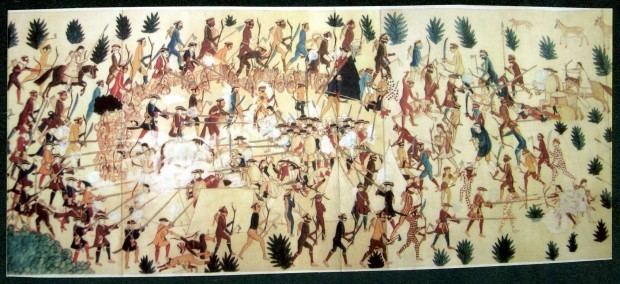 | ||
Location Great Plains, West Hale, Kansas, United States | ||
Villasur expedition
The Villasur expedition of 1720 was a Spanish military expedition intended to check the growing French influence on the Great Plains of central North America. Led by Lieutenant-General Pedro de Villasur, the expedition was attacked in present-day Nebraska by a Pawnee and Otoe force. Forty-six of the Spaniards and their Indian allies were killed. The survivors retreated to their base in New Mexico.
Contents
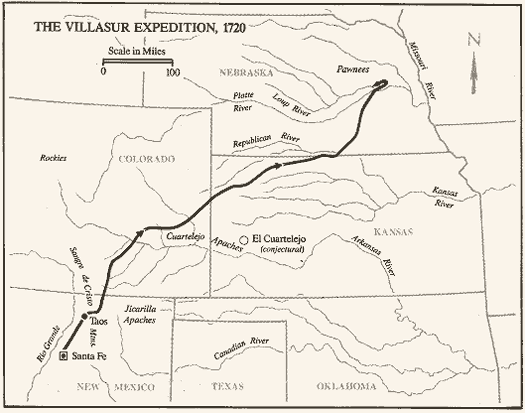
Background
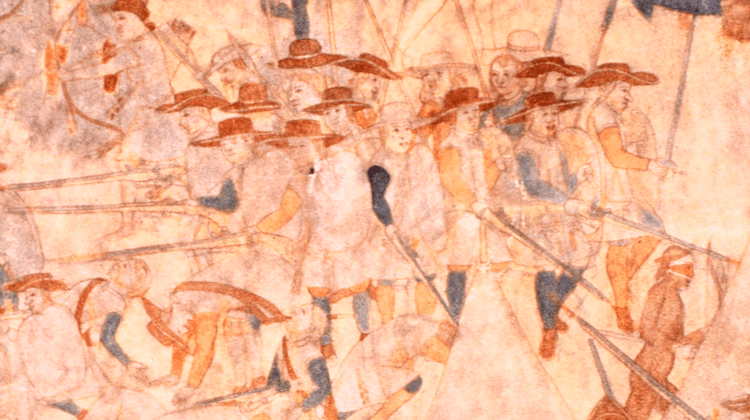
In the first part of the 18th century, French explorers and fur traders began to enter the plains west of the Missouri River. In 1714, Étienne de Veniard, Sieur de Bourgmont became the first European known to have reached the mouth of the Platte River; other French traders may have visited the area and lived among the Indians. Spain, which had claimed "ownership" of the Great Plains since the Coronado expedition of the 16th century, worried about the expansion of French influence in the region. In 1718, the War of the Quadruple Alliance broke out between France and Spain.
Expedition
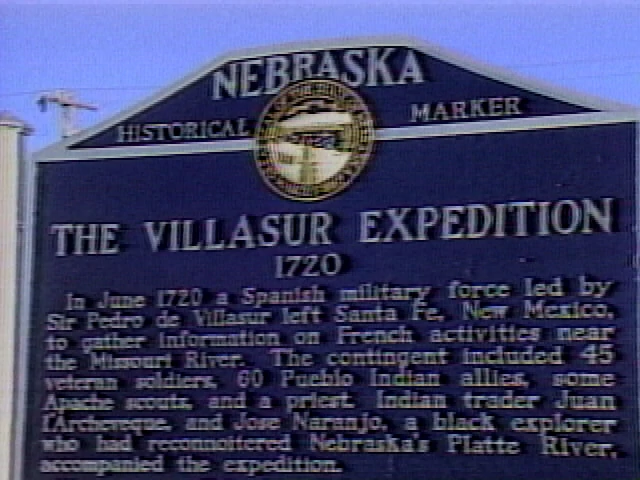
The governor of the Spanish colony of Nuevo México, based in Santa Fe, directed Villasur to capture French traders on the plains. Spanish authorities hoped to gather intelligence about French ambitions in the region. Villasur, who had no experience of Indians, left Santa Fe on June 16, 1720, leading an expedition that included about 40 Cuera soldiers of a mounted frontier corps, 60-70 Pueblo allies, a priest, a Spanish trader, and approximately 12 Apache guides, who were tribal enemies of the Pawnee. Jose Naranjo, scout leader and explorer, was of African-Hopi parentage. A war captain for the Spanish Indian auxiliaries, Naranjo had by 1714 already explored the Platte River region three times.
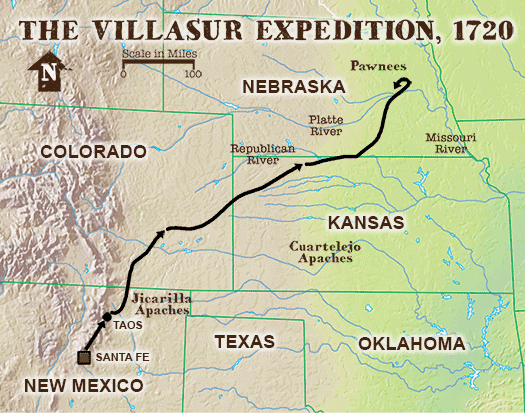
The expedition made its way northeast through present-day Colorado, Kansas and Nebraska. In August, they made contact with the Pawnee and Otoe along the Platte and Loup rivers. Using Francisco Sistaca, a Pawnee held as a slave (and renamed) by the Spanish, Villasur made several attempts to negotiate with Indians in the area. On August 13, Sistaca disappeared from camp. Nervous about the possibility of attack and the increasing number and belligerence of the Pawnee and Otoe, Villasur camped that night just south of the Loup/Platte confluence, near what is now Columbus, Nebraska.
Battle

The Pawnees and Otos attacked at dawn on August 14, shooting heavy musketry fire and flights of arrows, then charging into combat clad only in paint, headband, moccasins and short leggings. Some survivors reported that Frenchmen had been among the attackers, and men in European dress are shown in a surviving painting of the battle. The Spanish were mostly asleep at this hour; possibly Sistaca had told the Pawnees the best time to attack. In a brief battle, they killed 36 Spaniards, including Villasur and Naranjo, 10 Pueblo scouts, and Jean L'Archevêque, a Frenchman who had been brought as an interpreter on the understanding that Frenchmen were gaining influence on the Plains. The Pueblo allies had been encamped near, but separately from the Spanish and were not the first targets of the attack. The few "leather soldiers" who escaped were horse-holders, who were able to break loose while their comrades attempted to form a defensive cluster.
Aftermath

The Spanish and Pueblo survivors returned to Santa Fe on September 6. The expedition had journeyed farther to the north and east than any other Spanish military expedition, and its defeat marked the end of Spanish influence on the central Great Plains. The governors of New Mexico inquired into and apportioned blame for the disaster over the next seven years. The French in Illinois were elated to learn of the battle in October, but subsequent French expeditions did not succeed in establishing French trade and influence in the area.
